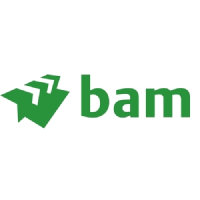
Ferrovial SE
AEX:FER


Utilize notes to systematically review your investment decisions. By reflecting on past outcomes, you can discern effective strategies and identify those that underperformed. This continuous feedback loop enables you to adapt and refine your approach, optimizing for future success.
Each note serves as a learning point, offering insights into your decision-making processes. Over time, you'll accumulate a personalized database of knowledge, enhancing your ability to make informed decisions quickly and effectively.
With a comprehensive record of your investment history at your fingertips, you can compare current opportunities against past experiences. This not only bolsters your confidence but also ensures that each decision is grounded in a well-documented rationale.
Do you really want to delete this note?
This action cannot be undone.

| 52 Week Range |
31.075
41
|
| Price Target |
|
We'll email you a reminder when the closing price reaches EUR.
Choose the stock you wish to monitor with a price alert.
This alert will be permanently deleted.
 Ferrovial SE
Ferrovial SE
 Ferrovial SE
Current Portion of Long-Term Debt
Ferrovial SE
Current Portion of Long-Term Debt
Ferrovial SE
Current Portion of Long-Term Debt Peer Comparison
Competitors Analysis
Latest Figures & CAGR of Competitors

| Company | Current Portion of Long-Term Debt | CAGR 3Y | CAGR 5Y | CAGR 10Y | ||
|---|---|---|---|---|---|---|

|
Ferrovial SE
AEX:FER
|
Current Portion of Long-Term Debt
€1.9B
|
CAGR 3-Years
34%
|
CAGR 5-Years
13%
|
CAGR 10-Years
3%
|
|

|
Koninklijke BAM Groep NV
AEX:BAMNB
|
Current Portion of Long-Term Debt
€81.2m
|
CAGR 3-Years
-20%
|
CAGR 5-Years
-10%
|
CAGR 10-Years
N/A
|
|

|
Arcadis NV
AEX:ARCAD
|
Current Portion of Long-Term Debt
€82m
|
CAGR 3-Years
-13%
|
CAGR 5-Years
-14%
|
CAGR 10-Years
N/A
|
|

|
Fugro NV
AEX:FUR
|
Current Portion of Long-Term Debt
€100.9m
|
CAGR 3-Years
6%
|
CAGR 5-Years
79%
|
CAGR 10-Years
N/A
|
|
Ferrovial SE
Glance View
Ferrovial SE is a leading global infrastructure and services company, rooted in a rich history that dates back to 1952. With its headquarters in Madrid, Spain, the firm specializes in the development, construction, and management of large-scale projects such as airports, roads, and public transportation systems. Notably, Ferrovial operates high-profile assets, including Heathrow Airport, one of the busiest in the world, highlighting its expertise in public-private partnerships and its capability to deliver complex infrastructure projects efficiently. As urbanization continues to rise globally, Ferrovial is poised to capitalize on increasing demand for resilient infrastructure, emphasizing sustainability and innovation through its advanced engineering and construction techniques. For investors, Ferrovial represents a compelling opportunity, blending stability and growth potential. The company's diversified geographical footprint spans Europe, North America, and other regions, which mitigates risk and supports steady revenue streams across various markets. Ferrovial is also committed to sustainability, aiming to reduce carbon emissions in its operations—a responsibility that resonates with both regulatory trends and socially-conscious investors. With strategic investments in technology and an unwavering focus on operational excellence, Ferrovial is not just constructing roads and airports; it is shaping the future of connectivity and efficiency in transportation. This makes the company an interesting consideration for investors looking to align their portfolios with strong, forward-thinking enterprises in the infrastructure sector.

See Also
What is Ferrovial SE's Current Portion of Long-Term Debt?
Current Portion of Long-Term Debt
1.9B
EUR
Based on the financial report for Jun 30, 2024, Ferrovial SE's Current Portion of Long-Term Debt amounts to 1.9B EUR.
What is Ferrovial SE's Current Portion of Long-Term Debt growth rate?
Current Portion of Long-Term Debt CAGR 10Y
3%
Over the last year, the Current Portion of Long-Term Debt growth was 104%. The average annual Current Portion of Long-Term Debt growth rates for Ferrovial SE have been 34% over the past three years , 13% over the past five years , and 3% over the past ten years .


 You don't have any saved screeners yet
You don't have any saved screeners yet
